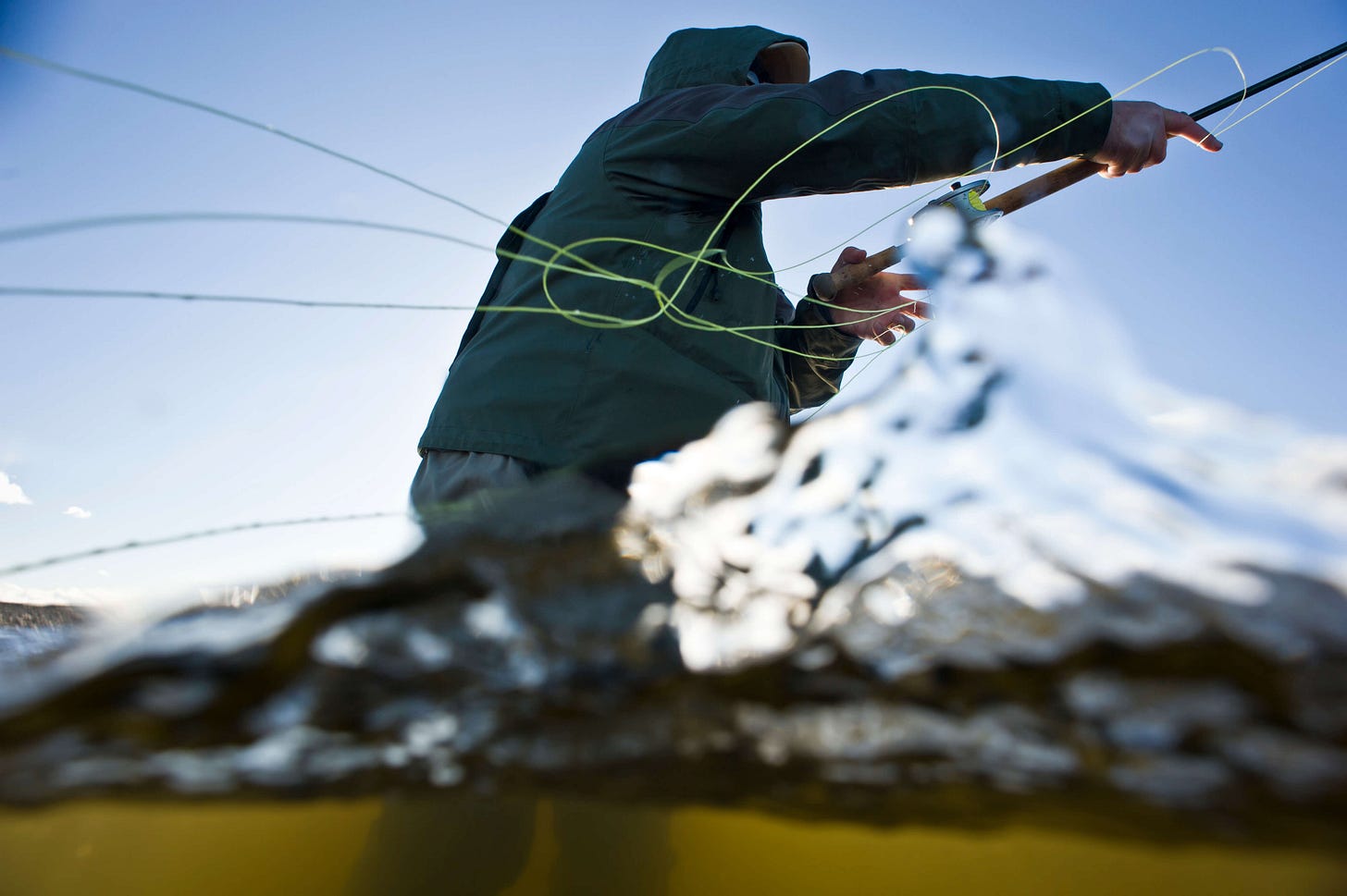Fast Rods Cover Casting Flaws
Be honest. Are fast-action rods covering up flaws in your fly casting?
Technology is a wonderful thing. And as it has been applied to sports, technology has done wonders to put us all in the game.
Look, for example, at tennis racquets and golf clubs. Composite materials, oversize heads (larger sweet spots)–if you purchase the new, user-friendly gear, you simply can’t lose! Right?
Well, most guides and instructors will begrudgingly tell you this isn’t always the case. If your golf swing, tennis stroke or fly cast is technically unsound, no amount of new gear can “fix” your basic, and suffering, mechanics.
It isn’t the gear, it’s the player, and that’s just as true with fly fishing as with other sports.
These fast-action fly rods are great fun, and they do help you add distance to your casts. How? By compensating for errors in your form.
When I practice fly casting, I practice with a slow- or medium-action rod. Then, if I want to kick it up a notch, I use that fast-action rod to my advantage. There’s a real benefit to using the latest technologies. They’re impressive and work.
But ask yourself, what’s the real advantage for your particular casting style: Are you a tour golf pro, swinging the latest, greatest clubs because they enhance an already beautiful game, or are you simply using them as a crutch?
Be honest.
Maybe even drop a little dough to enlist a trained fly casting instructor to help analyze your stroke and mechanics.
Once you better understand the strengths and weaknesses of your fly casting mechanics, choosing the correct fly rod “action” should be pretty straightforward. Most fly rods today are uniquely designed to accommodate beginner, intermediate and advanced anglers.
Hit your local fly shop, let them steer you into the right setup and start practicing with a fly rod that allows your skills to evolve and grow.
To read more fly-fishing tips from Kirk Deeter, check out The Little Red Book of Fly Fishing.






We tend to see that super fast rods produce two significant challenges: 1. The increased rod speed allows beginners or intermediates to carry a lot more line than they would be comfortable casting otherwise (with a more medium-action rod) - "getting over you skis" from the snow sport analogy. This also exacerbates casting mistakes when they happen. 2. These same casters also aren't allowing themselves to "feel" the cast - most importantly, when it works or fails, and thus don't receive the casting feedback they should be integrating into their stroke. - Andrew
CosmicJohn,
What specifically is wrong? There's almost zero "fly-fishing physics" in the article - it's a thought piece by Deeter.